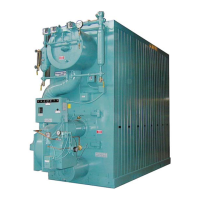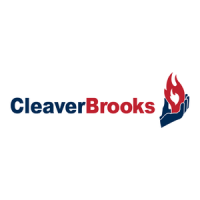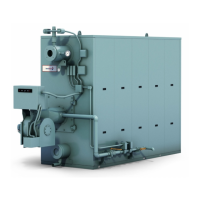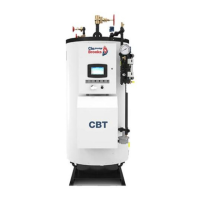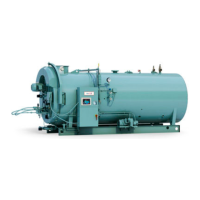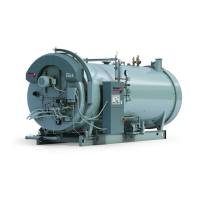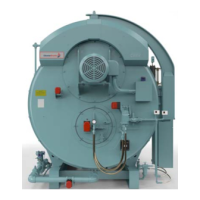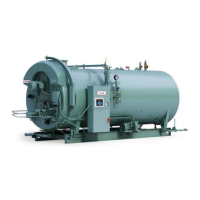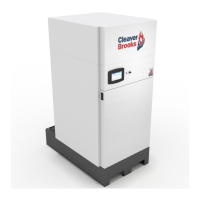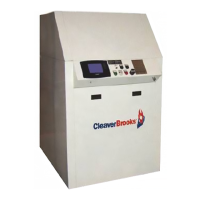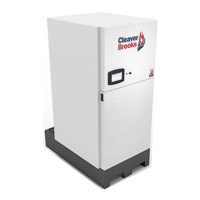Chapter 3 General Description
3-6 750-177
!
DANGER
CAUTION
Be sure that the blowdown piping is in good condition, the discharge vents are clear of obstruction,
and that the waste is piped to a safe point of discharge, in order to avoid serious personal injury or
death.
If a quick-opening valve and globe-type or slow-opening valve are installed, the quick-opening valve is
normally opened first and closed last. Control of the water released from the boiler is accomplished with the
slow-opening valve.
!
DANGER
CAUTION
When initially opening the blowdown valve, open the valve slowly to heat the discharge piping. Fail-
ure to follow this procedure could result in rapid expansion and damage to the piping.
The drop of the water level in the gauge glass can be used in determining the length of time that the blowdown
valve is left open. This is to be used as a reference only, as proper water analysis on a regular basis will serve
as an indicator of the effectiveness of the blowdown procedures used.
!
DANGER
CAUTION
Do not pump the lever action valve open and closed when draining water during blowdown. The hy-
draulic forces resulting from this pumping action could break the valve bodies or pipe fittings in the
blowdown lines.
Blowdown valves should be closed in a specific order after draining water for blowdown. Close the
downstream (slow opening) valve first, followed by the quick-opening valve next to the boiler. Open the
downstream valve slightly to release the water trapped between the valves, then close the valve again.
The water column and gauge glass should be blown down by draining until the water in the gauge glass is
clear. Open and close the water column and gauge glass blowdown valves slowly, allowing the water in the
gauge glass to rise to a normal level before repeating the process.
Under no circumstances should a blowdown valve be left open and unattended during the blowdown
operation.
Frequency of Blowdown
In practice, the boiler blowdown valve(s) should be opened periodically in accordance with a set operating
schedule. Frequency and duration of the blowdown are to be determined by chemical analysis of boiler water
and waterside boiler condition, as observed during regular inspections.
From an economy standpoint, frequent short blowdown is preferred to irregularly scheduled, lengthy
blowdown. This is particularly true when the suspended solids content of the water is high.
F. Cleaning
Although it may be necessary to clean the system, information in this chapter deals primarily with cleaning
the boiler under isolated conditions.
System piping connected to the boiler may contain oil, grease, or other foreign matter. These impurities must
be removed to prevent damage to the heating surfaces of the pressure vessel. Chemical cleaning generally is
necessary in this case and the entire system should be drained after cleaning. Consult your local Cleaver-
Brooks
authorized representative for recommended cleaning compounds and application procedures. For
information on Boilout, see Section G, in this chapter.
